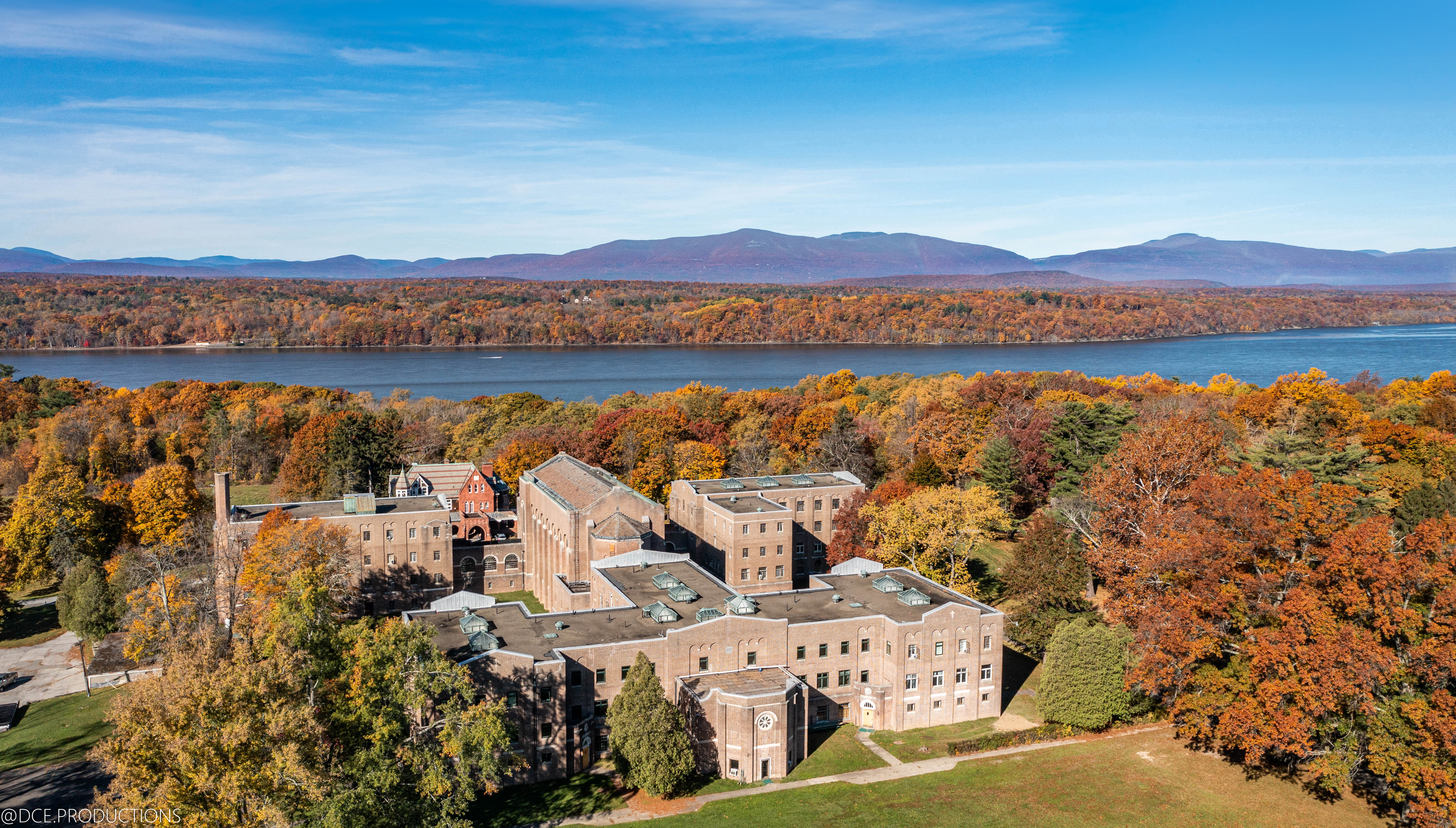
6 minute read
FOR LOVE OF THE WORLD

Spurred by a $500-million challenge grant from George Soros and the Open Society Foundations (OSF), Bard College has raised for its endowment more than $400,000,000 of the $500-million match. The importance of having Bard continue as a beacon for higher education—its exemplary commitment to the liberal arts and its spectacular success in developing innovative programs for providing access to rigorous, high-quality education for new populations around the world—was a motivating factor for Soros and OSF to commit to the pledge of $500 million for Bard’s unrestricted endowment. This pledge ranks among the largest recent commitments to higher education in the United States. The expanded endowment will provide an important additional stream of income and set the College on a path of greater financial selfdetermination and stability. Endowment donations dedicated to Bard’s programs count toward the match, and endowment commitments in the form of planned gifts and bequests made by December 31, 2025, will also be matched dollar for dollar.
As the College approaches the completion of this important fundraising initiative, it will turn its focus to a comprehensive campaign— For Love of the World, inspired by Hannah Arendt’s “amor mundi”—that includes raising critical annual support and securing dedicated funds for capital projects, such as an expanded wellness and fitness center, new suite-style residences on North Campus, the Maya Lin–designed Performing Arts Lab, renovation of older buildings, maintenance of the landscape, and new or expanded facilities for many academic programs.
With area housing in short supply, the need for additional residence halls is critical to the functioning of the College. Some 300 rooms now under construction southwest of Robbins Annex, on a site once occupied by two temporary dormitory structures, will provide 434 beds for students beginning in the fall 2025 semester. Lounges, study spaces, multiuse and café areas, and seminar and meeting rooms in a central “Head House” will meet a wide variety of student needs around the clock. A central quad will create additional gathering areas for the student community. To help Bard achieve its decarbonization goals, the Passive House–certified, super-insulated structures will be heated and cooled by a geothermal field; the College is working toward using sustainable energy sources in all renovation and new construction.
North of the new residence halls, on the other side of Ward Manor, is the 25,000-squarefoot Maya Lin–designed Performing Arts Lab. Opening in 2026 as the home of Fisher Center LAB, the acclaimed residency and commissioning program for professional artists, the Performing Arts Lab will bring critically needed rehearsal and teaching facilities to Bard’s undergraduate programs in Dance and in Theater and Performance.
The Bard College Health and Wellness project includes the new construction of a nearly 60,000-square-foot, two-story building made up of two parts: a preengineered field house, with tennis and basketball courts, and a flat-roofed, cross-laminated timber pavilion housing fitness and wellness areas, medical offices and treatment rooms, athletic training facilities, locker rooms, and classrooms. Natural materials and scenic views connect visitors to the environment and foster wellbeing and a sense of place. Bard’s new Health and Wellness building demonstrates the school’s commitment to the environment, inclusion, and community.

In December 2023, Bard acquired 260 acres in Barrytown adjacent to Montgomery Place Campus (which the College purchased in 2016) and bounded by River Road to the east and the Hudson River to the west. The original home there, which is said to have been modeled on the Château de Beaumarchais in the Loire region of France, was built in 1796 for John R. Livingston. He named it after one of Napoleon’s most famous generals, André Masséna, and the College has followed suit, dubbing the property Massena Campus. Sadly, the mansion was destroyed by fire in 1885 and rebuilt in a more fire-resistant, gothic style. In 1928, the property passed out of private hands when the Christian Brothers bought it and turned it into a seminary for Catholic youth education. In 1974, they sold it to the Unification Church, which established the Unification Theological Seminary (UTS) there. In 2000, UTS began transitioning to a property in midtown Manhattan, and in 2018 the property was again put up for sale.

In April, the Center for Human Rights and the Arts (CHRA) inaugurated the Massena Campus with its 2024 master’s thesis exhibition, Material As Witness. In addition to CHRA’s offices and studios, the property is also home to a satellite Dean of Student Affairs office, Stevenson Library archives, and 13 new art studios, and will soon house the Wihanble S’a (WEE hah blay SAH) Center for Indigenous AI. It was not until November 19, however, that we learned who the property’s main tenant would be. On that day, Simon’s Rock, the groundbreaking early college, announced that after nearly six decades in Great Barrington, Massachusetts, it would relocate to Bard’s Massena campus after the Spring 2025 semester. Though the move was decided upon quickly, in a sense the process began in 1979, when Simon’s Rock became Bard College at Simon’s Rock. At the time, it was clear that the early college model—which empowered students to start college during their last two years of high school—was an important innovation for higher education, and that in order to improve the lives of as many young people as possible, a partner institution was needed. Ironically, the success of Bard’s stewardship now necessitates the move to Massena.
“Simon’s Rock has been the pioneer of early college, and as a result of its success and track record, there are now 10 public early college high school campuses founded by Bard in six states and more than one million high school students nationwide taking early college courses this year,” said Bard College President Leon Botstein. “Because of that success, and the larger national movement which it inspired, demand for the original residential model is less strong than it was when Elizabeth Blodgett Hall founded Simon’s Rock in the 1960s. With Bard’s recent purchase of the Massena Campus, we now have more flexibility in space that can allow for a more financially viable and educationally rich future for Simon’s Rock by placing it physically proximate to the institution that has owned and run it for 45 years. By moving the institution, we are giving Simon’s Rock the opportunity to continue its mission.”
For more information or to pledge your support please contact Debra Pemstein, Vice President for Development and Alumni/ae Affairs
845-758-7405









